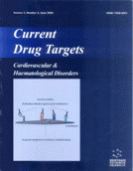Abstract
The peroxisome proliferator-activated receptors (PPARs) are nuclear fatty acid receptors, which contain a type II zinc finger DNA binding motif and a hydrophobic ligand binding pocket. These receptors are thought to play an important role in metabolic diseases such as obesity, insulin resistance, and coronary artery disease. Three subtypes of PPAR receptors have been described: PPARα, PPARα/β, and PPARγ . PPARα is found in the liver, muscle, kidney, and heart. In the liver, its role is to up-regulate genes involved in fatty acid uptake ( β-oxidation and ω-oxidation). PPARδ/β is involved in fatty acid oxidation in muscle. PPARγ has high expression in fat, low expression in the liver, and very low expression in the muscle. The thiazolidinediones (TZD) are synthetic ligands of PPARγ . By activating a number of genes in tissues, PPARγ increases glucose and lipid uptake, increases glucose oxidation, decreases free fatty acid concentration, and decreases insulin resistance. There is a sound rationale for the use of TZDs in patients with type 2 diabetes mellitus and promising preliminary data in patients with patients with pre-diabetes. In patients with type 2 diabetes, thiazolidinediones had been shown to decrease mean HbA1c by 1.5% and lower HbA1c to less than 7% in 30% of patients. Decreased muscle insulin resistance primarily mediates the glucose lowering effect. In addition, there are several nonhypoglycemic effects of TZDs which may be beneficial to both diabetics and patients with pre-diabetes. These include effects on lipid metabolism, blood pressure, endothelial function, atherosclerotic plaque, coagulation, and albuminuria. In a pilot study, we recently demonstrated that insulin sensitizers such as thiazolidinediones appear to be associated with better clinical outcomes compared to insulin providers in diabetic patients presenting with acute coronary syndromes. In another study, we showed that the prediabetic state is a marker for worse prognosis in patients with acute coronary syndromes. In this article, we review the existing literature on the effectiveness of PPAR-γ agonists in patients with either overt diabetes or a prediabetic state.
Keywords: type diabetes mellitus, hyperglycemia, insulin sensitizing agents, vascular complications, insulin resistance, anti-atherosclerotic
 5
5













